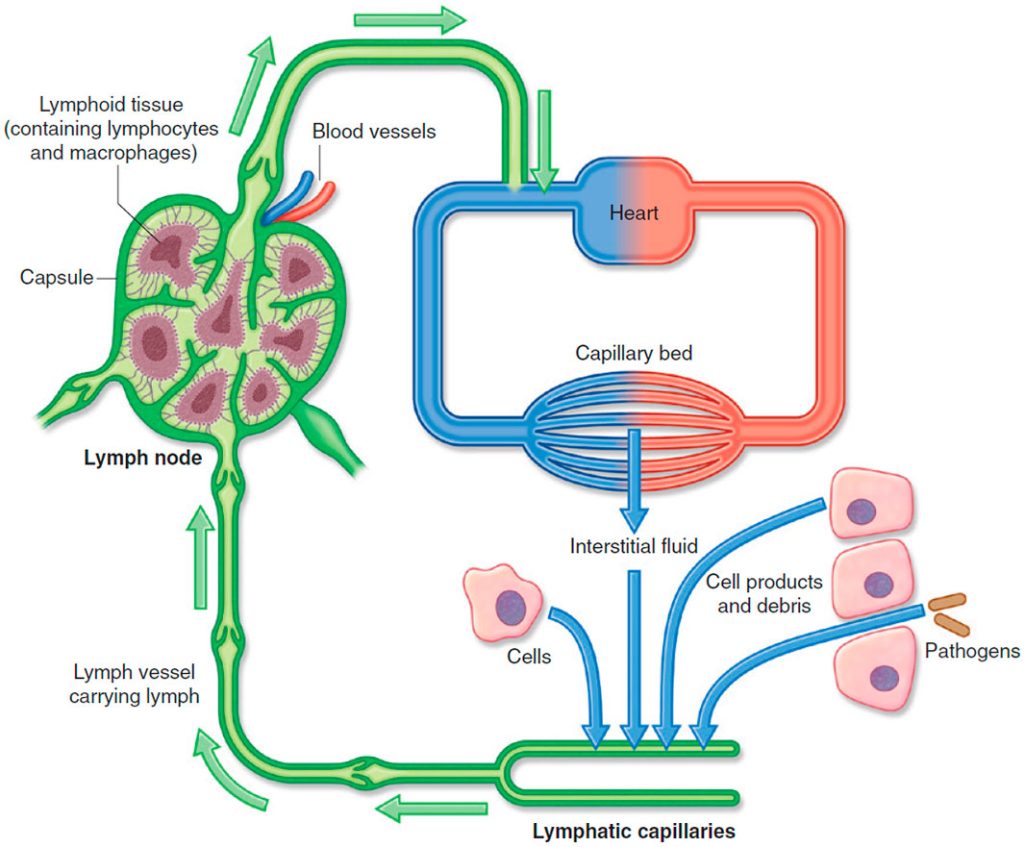Lymphatic System: A Deep Dive into the Vessels and Nodes
The lymphatic system, a critical part of our body’s immune response, consists of an extensive network of lymphatic vessels, lymph nodes, and various other components. This intricate and interconnected network helps maintain the body’s fluid balance, absorbs and transports fats from the digestive system, and supports immune functions. Understanding this system in detail can provide a deeper insight into how our body protects itself and maintains homeostasis.

Lymphatic System
Lymphatic Vessels: A Complex Network
Lymphatic vessels form a complex network that stretches across the body, beginning as blind-ended capillaries in tissues. These capillaries are unique in their permeable structure, allowing them to collect and transport interstitial fluid lost from vascular capillary beds during nutrient exchange processes.
The fluid drained into the lymphatic capillaries includes not just the interstitial fluid, but also cells of the lymphocytic system, cell products like hormones, and cell debris. All these components are essential to the body’s immune response and overall health. The lymphatic system also serves as a conduit for pathogens, facilitating their detection and elimination by the immune system.
In the small intestine, certain fats absorbed and processed by the intestinal epithelium are packaged into chylomicrons, protein-coated lipid droplets. These chylomicrons, along with other components of the interstitial fluid, drain into the lymphatic capillaries, also known as lacteals. They are then transported to the venous system in the neck, making the lymphatic system a crucial pathway for fat absorption.
The fluid in most lymphatic vessels, known as lymph, is typically clear and colorless. However, the lymph from the small intestine carrying chylomicrons, termed chyle, is opaque and milky due to their presence.
The lymphatic system permeates most areas of the body, including those associated with the central nervous system. However, it does not extend to the bone marrow or avascular tissues such as epithelia and cartilage.
Movement of lymph through the lymphatic vessels is generated mainly by the indirect action of adjacent structures, notably the contraction of skeletal muscles and pulses in arteries. Unidirectional flow within these vessels is maintained by the presence of valves, ensuring that the lymph fluid travels in the correct direction.

Lymph Nodes: The Body’s Defense Filters
Lymph nodes, small encapsulated structures that interrupt the course of lymphatic vessels, play a vital role in the body’s defense system. They act as sophisticated filters, trapping and phagocytosing particulate matter carried in the lymph.
Because of their efficient filtration capabilities, cells that metastasize from primary tumors often lodge and grow as secondary tumors in lymph nodes. Clinicians can use changes in lymph nodes, such as enlargement or hardening, to detect pathological changes or track the spread of disease.
Certain regions of the body, particularly those at high risk for foreign pathogen entry like the body’s surface, the digestive system, and the respiratory system, are associated with clusters or an abundance of lymph nodes. These nodes are abundant and palpable in the axilla, the groin and femoral region, and the neck. Deep sites that are not palpable include those associated with the trachea and bronchi in the thorax, and with the aorta and its branches in the abdomen.

In conclusion, the lymphatic system, with its elaborate network of vessels and nodes, plays a pivotal role in the body’s defense mechanisms. It aids in maintaining fluid balance, absorbing and transporting fats, filtering harmful substances, and activating the immune response. A deeper understanding of this system’s structure and function can provide valuable insights into our body’s intricate mechanisms of maintaining health.











